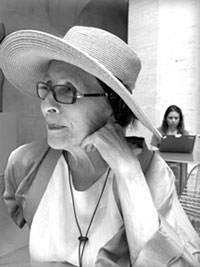 *
*
“Miriam Levine is a poet, memoirist, and fiction writer. Her five collections of poetry include The Dark Opens, winner of the Autumn House Poetry Prize, and Saving Daylight (2019). She is the author of Devotion, a memoir, and In Paterson, a novel. Levine has won grants from the National Endowment for the Arts and the Massachusetts Artists Foundation. Her work has appeared in American Poetry Review, Kenyon Review, The Paris Review, Ploughshares, The Southern Review, and Virginia Quarterly Review. She is professor emerita at Framingham State University in Massachusetts and lives in New Hampshire and Florida.

Miriam Levine
In Saving Daylight, her fifth poetry collection, Miriam Levine connects intimately with people and places. Levine’s poems express beauty inseparable from peril. They chart a world in which an infant turns his “head toward light,” while a mother fights “sleep to keep” him alive; where the tender sky is “baby blue,” while sea levels dangerously rise. Levine’s poems are set in the American landscape – northeast, southeast – in Russia, the Greek Islands, and in the poet’s mind when sleepless she remembers a friend’s last words, an important teacher, and the ravishing sight of a lover. Even as she mourns the loss of the near and dear they come alive in Saving Daylight along with flowers throwing off “streaks of light.” Worldly and innocent, Levine prays to “banish each disgrace” of her life,” as she invites self-forgetfulness and compassion.”
— From Levine’s Website
Doug Holder: Miriam this collection – your sixth – marks your 80th birthday. Yet, as you have said, there is a mixture of the “worldly and innocent.” I think to still maintain one’s innocence is essential for the poet. Your thoughts?
Miriam Levine: It is not “essential” for a poet to keep innocence alive. There are marvelous poets who have little to do with innocence; Baudelaire, for instance. The loss of innocence is one of literature’s great themes, and the shock of such a loss. I think of innocence – my own – as freshness akin to faith, openness, willingness to live through seemingly empty moments. And certainly not naiveté, though there’s plenty I do not know.
DH: There is so much vivid color included in your poems, of nature, people, the world, etc. I wonder, do you have any background as a painter?
ML: Call me an unambitious amateur painter. Right now, watercolor is my medium. The names of various shades are rich and musical – opera rose, burnt sienna, azure. And “lilac” is delightful. Color has always attracted me, especially out of doors. Someone once told me I was a butterfly or a bee in my previous life – those creatures go for color – but this is my only life. I swear I’ve always been human.
DH: From the poetry I have read it is quite evident that you have an intimate relationship with South Beach, Florida. Your poems about it are very sensual. You engage the senses – the unique scent of the ocean, the theatrics of the sky, the alluring perfume of flowers, at times it feels like a fever dream.
ML: The Florida scene is exciting and troubling, gorgeous and dangerous. Florida will disappear under the rising sea, yet I’m still drawn to it, still enthusiastic about being alive close to that sea. A reviewer of an early book of mine disliked enthusiasm and excitement. She preferred cool irony and wasn’t interested in what she called my “gaga” expressions; she was immune to sensual life; but I like enthusiasm, intensity and the life of the body. The South Beach poems may, as you say, read like a “fever dream,” but they mostly capture my waking life when my temperature is normal. The neurologist Oliver Sacks defines some visions as hallucinations, common experiences, some of them occurring during waking or falling asleep. These states of mind happen when I’m out walking or gazing into space at home. The ancient poets heard the voice of a muse. Sacks would call that voice an auditory hallucination. I hear the sound of the waves. South Beach inspires me.
DH: Pain and beauty are in close proximity in your work. Do you think one informs the other?
ML: Yes. Insistent dualism is a trap, I believe, so the “proximity” of pain and beauty is an accurate description. I agree: pain and beauty “inform” each other. I’m fed up with oppositions: pain versus beauty; beauty versus pain, yet I won’t abandon the opposition between good and evil, though at this point in my life I can’t write poems from a dualistic point of view.
DH: You have written a memoir, Devotion, and other works of non-fiction. Since I teach memoir to undergraduates, I encourage students to have a sense of lyricism in the book. So is the poetic tool necessary for this type of writing?
ML: No. There are many ways to write a memoir. Writers must first write shapely sentences. Mary McCarthy’s Memories of a Catholic Girlhood is not lyrical. It succeeds in part because the sentences are strong and sharp, and the material is interesting. There’s Edna O’Brien, a lyricist supreme. You may want to ask your students to imitate a memoirist who writes lyrical prose – a one-page assignment – or ask them to write a memory poem like DH Lawrence’s Piano, which begins… “Softly, in the dusk, a woman is singing to me;/Taking me back down the vista of years, till I see/A child sitting under the piano, in the boom of the tingling strings/And pressing the small, poised feet of a mother who smiles as she sings.”
DH: Tell us why someone should read Saving Daylight.
ML: Saving Daylight offers pleasure, consolation, and engagement with life.












Reader Comments